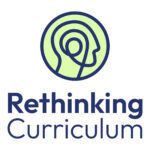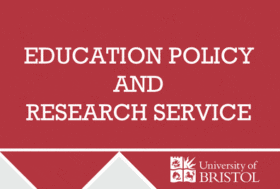Play matters: Rethinking Year 1

 This article has been published as part of the Rethinking Curriculum project, kindly funded by The Helen Hamlyn Trust.
This article has been published as part of the Rethinking Curriculum project, kindly funded by The Helen Hamlyn Trust.
ELLEN PARKER, ASSISTANT HEADTEACHER, STOKE PRIMARY SCHOOL, UK
Introduction
The transition from the Early Years Foundation Stage (EYFS) to Key Stage 1 (KS1) marks a significant juncture in a child’s educational journey, characterised by a noticeable shift from a play-based, explorative curriculum to a more instruction-based approach. This transition raises pertinent questions about the suitability of current practices and their impact on the holistic development of children within education.
This concern was particularly relevant for our school, an inner-city, two-form-entry primary school serving a diverse pupil population. The IDSR (2022) identifies the school characteristics as:
- percentage of FSM6 (free school meals within the last six years) within the highest quintile
- percentage of pupils receiving SEND (special educational needs and disability) support within the second-highest quintile
- percentage of pupils identified as EAL (English as an additional language) within the highest quintile
- percentage of stability within the lowest quintile
- the school’s location indicator for deprivation within quintile 4.
This leads to key challenges, such as persistent absence and low school readiness in terms of executive functions and self-regulation. When looking at transition and continuity from Reception, we observed previous cohorts struggle with the demands of a formal Year 1, such as increased curriculum expectations and prolonged periods at desks, resulting in a passive approach to their learning and reduced learning time due to its discrete nature. To maximise outcomes for our Year 1 learners, we understood that our approach needed to evolve by building upon the principles and practice of the Early Years.
Research indicates that our ‘most vulnerable pupils are at risk when play is absent from… learning’ (Allee-Herndon et al., 2019), as play provides opportunities for executive function development (Eberhart et al., 2023). Executive functions – for example, cognitive flexibility and self-regulation – are considered more reliable indicators of academic success than areas such as early literacy (McClelland et al., 2014). Moreover, studies have highlighted correlations between poverty and lower executive function (Blair and Raver, 2015), emphasising the importance of addressing this disparity. However, it should be recognised that the benefits of play-based learning extend beyond our most vulnerable learners. Developmental characteristics are not unique to specific year groups; children enter our classrooms with diverse starting points and their own early experiences. Play understands this and allows for a more inclusive and developmentally sensitive approach to education (Fisher, 2020), recognising and responding to the individual needs and strengths of each child, regardless of background or circumstance. To reduce play to a ‘prop’ ignores its potential to harness engagement and contribute to the learning of all children (Howe, 2016). Contextually, it is noteworthy that Wales extends its Foundation Stage to age seven and Scotland to age eight, underscoring the value attributed to Early Years education.
Pedagogical approach
With a school ethos that recognises strong early learning as a vital foundation for long-term success, our methodology needed to provide the best educational experience for our youngest learners. Crucial to this was the role of play in both academic and personal development. Barriers to learning and the challenges these posed to teachers were mapped, supporting the transition to a continuous provision methodology and play-based approach to learning, motivated by our passion to:
- facilitate contextual learning
- bring the essence of childhood to the classroom
- maximise learning outcomes
- ensure that transition to formal learning is not a reward for success in a continuous provision model
- empower teachers.
Firstly, extensive prior planning and CPD (continued professional development) took place for the Year 1 team, enabling a shared vision to form. This training highlighted the vital role that the environment plays in unlocking effective learning, a key question being: ‘What will the classroom look like?’ Drawing insights from literature, such as Can I Go and Play Now? (Bottrill, 2022), we identified and mapped key areas within the environment – for example, the outdoors, construction and craft – and defined the roles of adults within this approach. Alongside this, the desired learning system was matched to Year 1 National Curriculum objectives, and exploration of how these could be covered in the context of a play-based approach began. At this point, concerns started to arise:
- How could certain objectives be achieved?
- Would this approach allow enough time to cover everything?
- What would evidence look like?
To address these apprehensions, strong leadership, coupled with open communication between all stakeholders, was key. Firstly, a ‘through the eyes of the child’ framework was co-constructed, identifying core areas of learning throughout the curriculum that would guide planning and enable children to develop a broad set of skills ahead of Year 2. Shared planning time with core subject leaders was fundamental to ensuring quality objectives through the provision, complemented by development of a timetable allocating discrete teaching time for core and foundation subjects. It is important to note that these teaching moments were focused and short, followed by child-led exploration. When evidencing learning, emphasis was placed on the quality of teacher knowledge rather than collecting evidence for its own sake. Each child had a learning journal, where evidence was collated from various sources, including work produced from adult-led and provision moments, photos and QR codes.
The benefits of play-based learning were celebrated, but the possible limitations need to be a key feature of review. As McLane (2003) suggests, we must recognise the potential of play without romanticising it. While play offers invaluable opportunities for holistic development and exploration, it cannot fully address certain areas of learning. Fisher (2010) underscores this point, highlighting that play is not inherently suited to teach skills such as handwriting, phonics or specific factual knowledge, and that we should consider what play can teach and what it can consolidate.
Findings and implications
The adoption of a play-based approach in Year 1 has led to a wealth of findings and implications, despite being in the early stages of implementation. This case study represents just one school’s experience, and therefore has its limitations. However, it may be useful for practitioners working across the Early Years and Key Stage 1, along with senior leaders, in respect to reflecting on their pedagogical standpoint regarding play and the benefits that this brings to developing the whole child as an individual and as a learner.
Throughout the year, continuous reflection on our practice allowed us to refine, improve and challenge our thinking in real time. This exposed how, despite a strong rationale, there were challenges identified that needed to be addressed:
- the shift in thinking to planning through a play-based approach
- challenging more confident learners
- ensuring that independent learning activities were open-ended.
In response, we implemented strategies aimed at providing children with both focus and agency within the provision, designed in collaboration with wider leaders. This involved providing topic-related activities while also allowing the children to pursue their own ideas on how to complete these. The process of evidence collection has sought to dispel the notion of daily book work, emphasising the importance of varied evidence collection from the provision instead. Despite these challenges, the benefits of the play-based approach were evident in the enriched learning experiences and increased engagement for all children, balanced by a reduction in behaviour-related challenges and leading to strong outcomes for the cohort.
Anecdotal evidence has been abundant from both staff and children, providing valuable insights into the impact of this approach on learning outcomes and overall practice.
The most prevalent impacts on learning have been:
- a significant increase in time spent applying new skills
- continuous support and challenge tailored to each child’s individual starting point
- a notable rise in learning talk among the cohort
- enhanced insights into each child as a learner and the skills that they can use
- application of skills and knowledge across various contexts.
A significant finding is the notable increase in children’s motivation to write. By engaging in play-based learning experiences and fostering emotional connections with their learning, children have demonstrated increased motivation and enthusiasm to write. This contrasts with the previous formal approach, where writing was met with reluctance and disinterest.
Importantly, our journey highlighted that the challenge in Year 1 did not stem from what was being taught, but how it was being taught. By reviewing pedagogy rather than curriculum, we created an environment where children actively engaged in self-directed learning, confidently extending themselves and collaborating with peers.
Recommendations
For practitioners embarking on the journey of adopting a similar approach – embrace the journey!
To ensure the success of a play-based approach, consider the following:
- Develop a deep understanding of and belief in the effectiveness of play
- Commit to ongoing reflection and refinement
- Be willing to shift your mindset.
In practical terms, when beginning the development of this approach, consider:
- Connect with schools in your locality or beyond that have already implemented play-based learning models beyond the Early Years
- Take time to assess your current learning environment and craft a clear vision
- Dedicate time to developing your curriculum and defining the roles of adults within the provision.
Finally, I would encourage practitioners to approach this with courage and resilience. While the transition to a play-based approach may provoke apprehension and uncertainty, due to perceptions and stereotypes, it is essential to remember that this decision is rooted in what is best for our youngest learners.
References
Allee-Herndon KA, Dillman Taylor D and Roberts SK (2019) Putting play in its place: Presenting a continuum to decrease mental health referrals and increase purposeful play in classrooms. International Journal of Play 8(2): 186–203.
Blair C and Raver CC (2015) School readiness and self-regulation: A developmental psychobiological approach. Annual Review of Psychology 66(1): 711–731.
Bottrill G (2022) Can I Go and Play Now? Rethinking the Early Years. London: SAGE Publications.
Eberhart J, Paes TM, Ellefson MR et al. (2023) Executive functions and play. Trends in Neuroscience and Education 30: 10198.
Fisher J (2010) Moving on to Key Stage 1: Improving Transition from the Early Years Foundation Stage. London: Open University Press.
Fisher J (2020) Moving on to Key Stage 1: Improving Transition into Primary School. London: Open University Press.
Howe S (2016) What play means to US: Exploring children’s perspectives on play in an English year 1 classroom. European Early Childhood Education Research Journal 24(5): 748–759.
IDSR (2022), Gov.UK Inspection Data Summary Report, 19 October 2022 (accessed 21 March 2024)
McClelland MM, Cameron CE, Duncan R et al. (2014) Predictors of early growth in academic achievement: The head-toes-knees-shoulders task. Frontiers in Psychology 5: 599.
McLane J (2003) Thinking about play in the early childhood classroom. Erikson Institute. Available at: www.erikson.edu/wp-content/uploads/OP_mclane.pdf (accessed 21 March 2024).

 This article has been published as part of the Rethinking Curriculum project, kindly funded by The Helen Hamlyn Trust.
This article has been published as part of the Rethinking Curriculum project, kindly funded by The Helen Hamlyn Trust.








